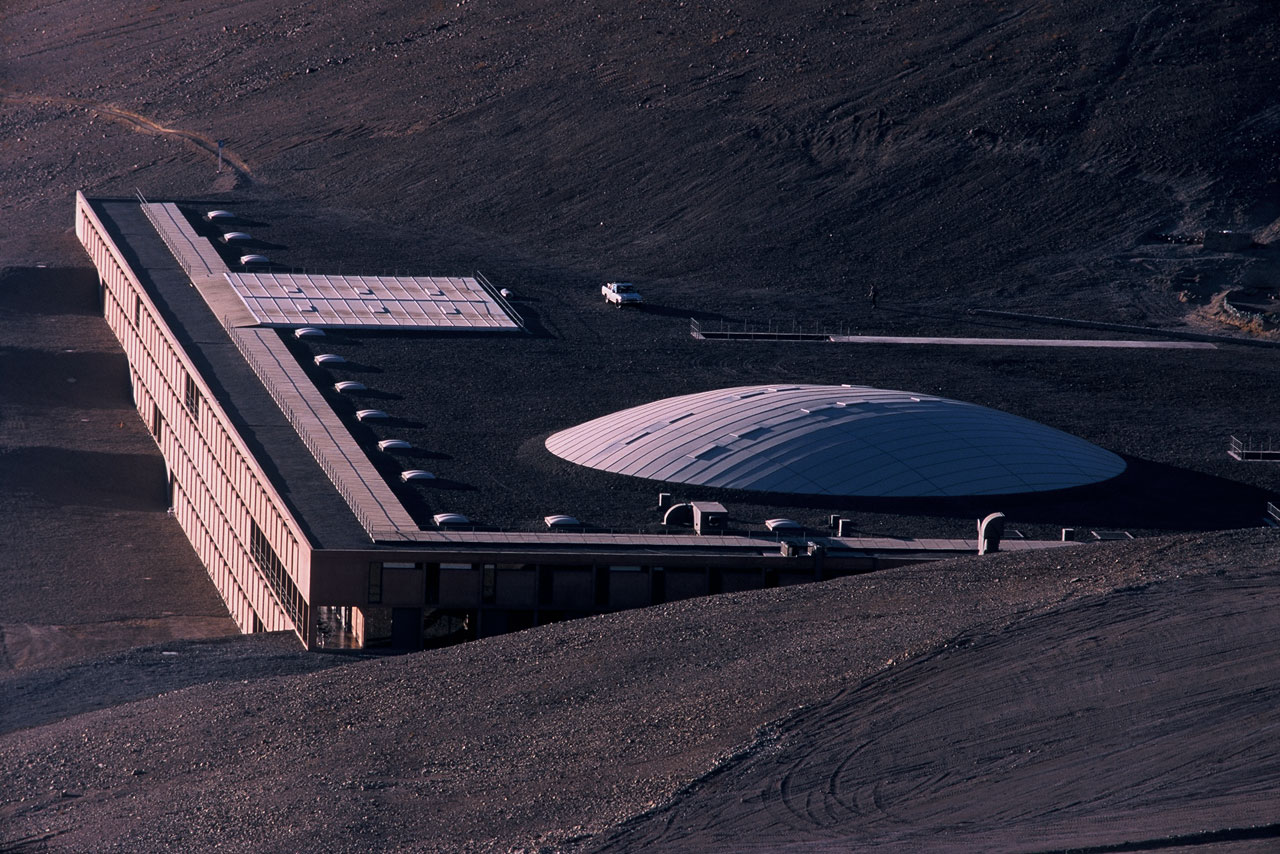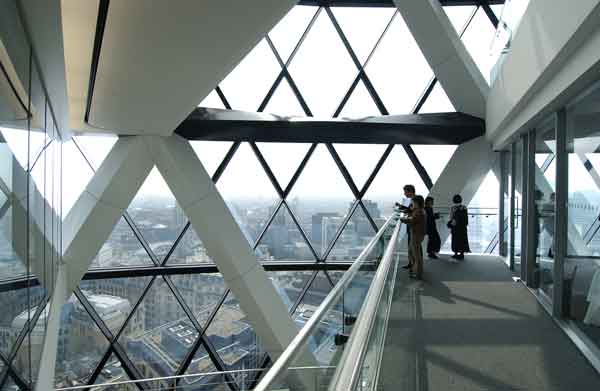And just like that I turned 20 today!!
Two decades I traversed withall,
Somethings I did please me, and somethings appall,
No significant event overall,
But I exulted greatly today on my birthday,
'Coz there were queued several wishes on my Facebook wall,
I then realised, this solitary thing I earned.....my chums and pals,
Esp. my Mohita, distinguished from all,
Thank you God, Thank you all.
And yes Happy New Year 2011 everyone!!!
Have a smashing, dashing, rocking and booming year ahead!!!
Friday, December 31, 2010
Thursday, December 30, 2010
Down the lane of the noughties (Edifices) [3/10]
3. European Southern Observatory Hotel, Cerro Paranal, Chile (2003)
At 2,400ft above sea level, this "hotel" for astronomers working in the Atacama desert has been designed to use the landscape to provide a comfortable environment in an inhospitable location. The hotel was designed to minimize light output that could disrupt the primary purpose for the astronomers' visits - the highly sensitive telescope peering out into space. And it works - the total light emissions from the building are smaller than a 100w bulb. Designed by Auer and Weber. This "hotel" for astronomers working in the Atacama desert is a perfect fusion of architecture and landscape, from the Munich practice Auer and Weber and engineers Mayr and Ludescher. Coolly geometric red concrete walls form a quasi-monastic courtyard, behind which rooms are stacked in orderly rows.
FEATURES:

At 2,400ft above sea level, this "hotel" for astronomers working in the Atacama desert has been designed to use the landscape to provide a comfortable environment in an inhospitable location. The hotel was designed to minimize light output that could disrupt the primary purpose for the astronomers' visits - the highly sensitive telescope peering out into space. And it works - the total light emissions from the building are smaller than a 100w bulb. Designed by Auer and Weber. This "hotel" for astronomers working in the Atacama desert is a perfect fusion of architecture and landscape, from the Munich practice Auer and Weber and engineers Mayr and Ludescher. Coolly geometric red concrete walls form a quasi-monastic courtyard, behind which rooms are stacked in orderly rows.
FEATURES:
 |
| The design facilitating the reduction of light emission |
- The main challenge was not disrupting the telescopes highly sensitive installations. So it has been designed so that the total light intensity emanating from it is not more than that of a 100W bulb.
- Like a dam across a reservoir, the hotel spans a shallow depression. Surrounding cliffs act as a support wall, although they do nothing to impede the breathtaking views of the ocean, especially from the dining wall balcony.
- Like a dam across a reservoir, the hotel spans a shallow depression. Surrounding cliffs act as a support wall, although they do nothing to impede the breathtaking views of the ocean, especially from the dining wall balcony.
- Concrete was chosen as the chief construction material by a process of elimination. Even then, water to mix the concrete had to be shipped in by tankers.
- Walls and ceilings have been left exposed and the concrete dyed red with ferrous oxide (or rust, to give it its common name) to match the desert outside. To continue this nature-inspired theme, the steel used in the facade and interiors has been powder-coated, to give it the appearance of raw metal.This use of concrete helps combat the extreme temperature differences found in the region. Its thermally sluggish behaviour has a positive effect on the temperature of the interiorspaces.
- At the heart of the hotel is the lounge area, a steep tropical garden inside the 35m-wide transparent dome.
- This rises above the hotel's central lounge area and creates a formal counterpoint to the telescope's enormous concave mirrors. The geodesic dome is covered in translucent polycarbonate panels that help to keep out the sun's radiation.
Earthquake Protection:
 |
| A view from the telescope |
- Partition walls have been stiffened and protected with expansion joints. Certain parts of the building, such as the 8m-high retaining walls, are decoupled.
- Using an innovative new technique, these concrete blocks have been anchored to the ground with fibreglass mats, so that they absorb any movement.
- In the event of an earthquake, the structure would float above ground, thus absorbing the shocks of the horizontal movement.
 |
| The Central Oasis |

The hotel also featured in a James Bond movie: "Quantum of Solace".
Wednesday, December 29, 2010
Down the lane of the noughties (Edifices) [2/10]
2. 30 St Mary Axe/ The Gherkin (2003-2004)
 |
| 30 St Mary Axe/ Gherkin |
 |
| The Gherkin - From the inside |
Tuesday, December 28, 2010
Down the lane of the noughties (Edifices) [1/10]
Let's take a walk down the road of edifices laid by man during the years 2000-2010.
1. The Millennium Dome/02
 |
| The Millennium Dome, Greenwich |
Facts:
- The entire roof structure weighs less than the air contained within the building. Although referred to as a dome it is not strictly one as it is not self-supporting, but is a mast-supported, dome-shaped cable network.
- The dome is the largest of its type in the world. Externally, it appears as a large white marquee with twelve 100 m-high yellow support towers, one for each month of the year, or each hour of the clock face, representing the role played by Greenwich Mean Time.
- In plan view it is circular, 365 m in diameter — one metre for each day of the year — with scalloped edges. It has become one of the United Kingdom's most recognisable landmarks.
- The canopy is made of PTFE-coated glass fibre fabric, a durable and weather-resistant plastic, and is 52 m high in the middle - one metre for each week of the year.
 |
| An Aerial View |
Labels:
2000-2010,
buildings,
clock face,
edifices,
greenwich,
millennium dome,
noughties,
O2
Subscribe to:
Posts (Atom)
